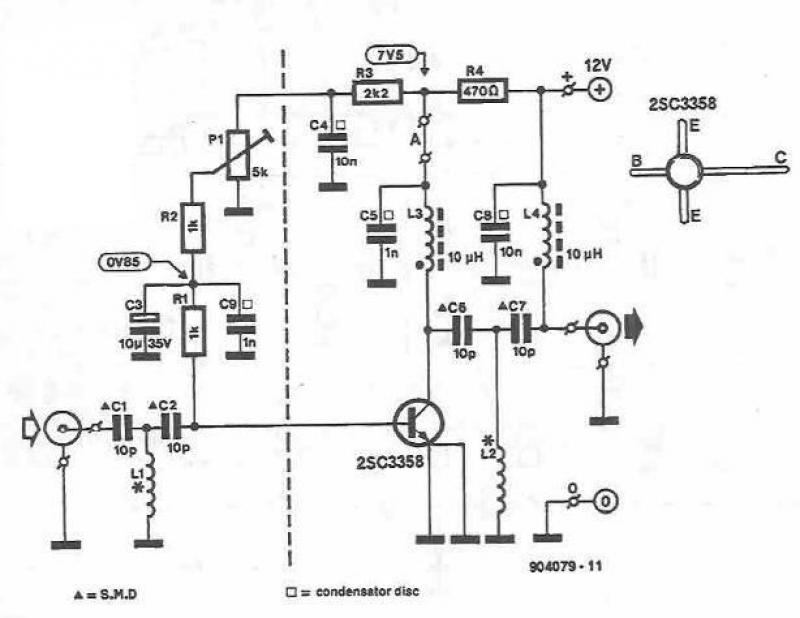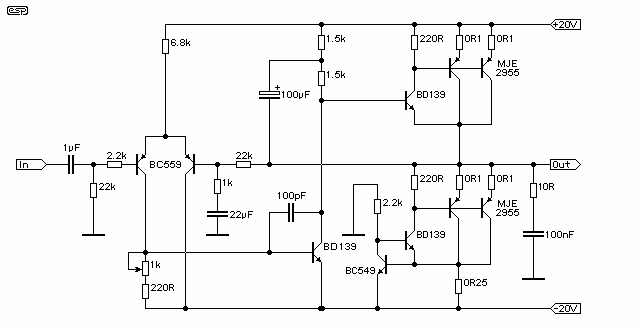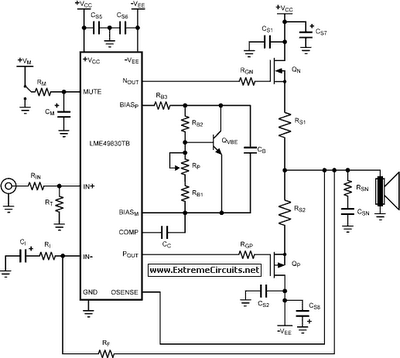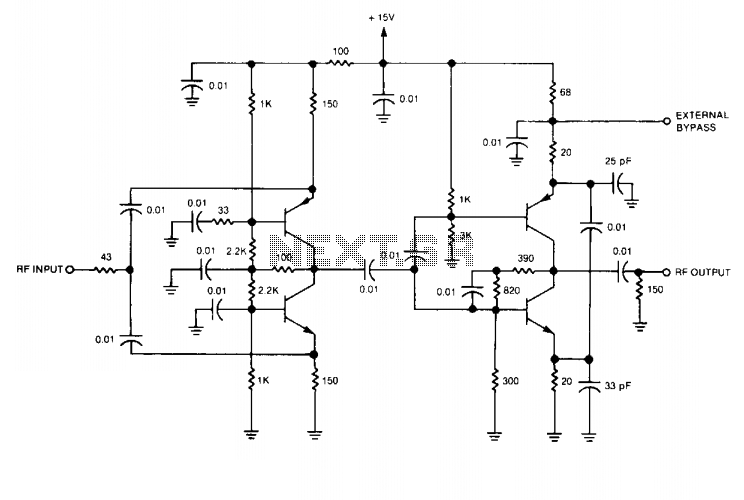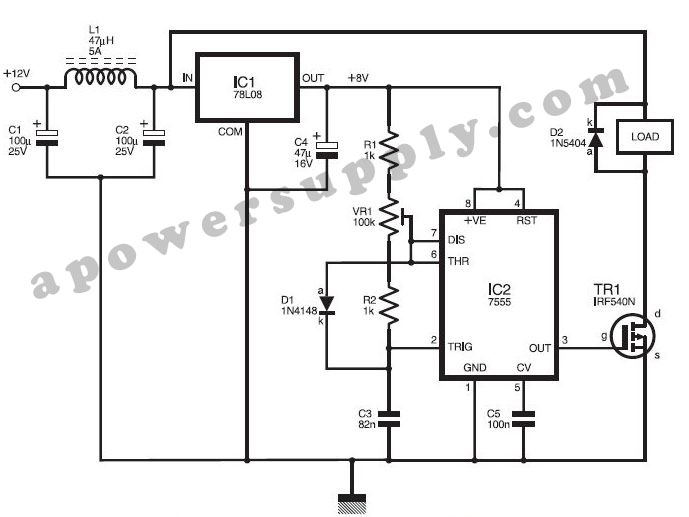
300W Subwoofer Power Amplifier
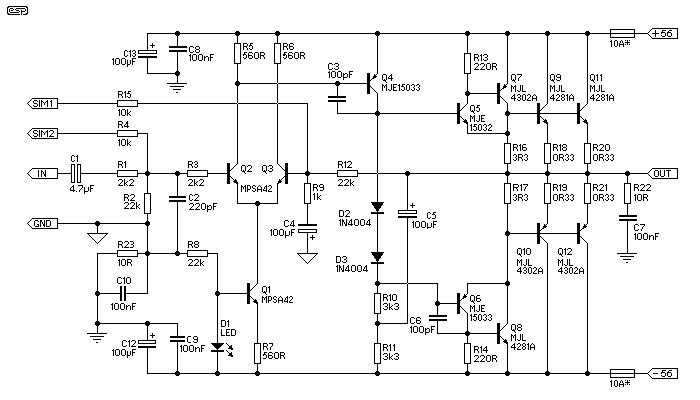
The amplifier can be assembled by a reasonably experienced hobbyist in about three hours. The metalwork will take somewhat longer, and this is especially true for the high continuous power variant. Even so, it is simple to build, compact, relatively inexpensive, and provides a level of performance that will satisfy most requirements. More: High power amps are not too common as projects, since they are by their nature normally difficult to build, and are expensive. A small error during assembly means that you start again - this can get very costly. I recommend that you use the PCB for this.
The described amplifier project is designed to cater to both hobbyists and audio enthusiasts seeking a high-performance solution without excessive complexity. The assembly time of approximately three hours indicates a streamlined design, likely featuring a well-organized printed circuit board (PCB) that simplifies the placement and soldering of components. The reference to metalwork suggests that the amplifier will require a chassis or enclosure, which is essential for both aesthetic and functional purposes, such as heat dissipation and electromagnetic shielding.
The amplifier's compact design is advantageous for users with limited space, while its relatively low cost makes it accessible compared to other high-power amplifiers on the market. The mention of a high continuous power variant implies that this amplifier is capable of delivering substantial output power, suitable for driving speakers in various applications, including home audio systems and small public address systems.
The caution regarding assembly errors highlights the precision required in constructing high-power amplifiers. Even minor mistakes can lead to significant issues, such as circuit failure or damage to components. This reinforces the importance of using a high-quality PCB, as it can minimize errors associated with manual wiring and ensure reliable connections. Additionally, the PCB design likely includes clear labeling and well-defined traces to facilitate the assembly process.
Overall, this amplifier project represents a valuable opportunity for hobbyists to engage in a rewarding build that combines technical skill with the satisfaction of creating a high-performance audio device. The careful consideration of design, assembly time, and potential challenges reflects a thoughtful approach to producing a reliable and effective amplifier.The amplifier can be assembled by a reasonably experienced hobbyist in about three hours. The metalwork will take somewhat longer, and this is especially true for the high continuous power variant. Even so, it is simple to build, compact, relatively inexpensive, and provides a level of performance that will satisfy most requirements.
High power amps are not too common as projects, since they are by their nature normally difficult to build, and are expensive. A small error during assembly means that you start again - this can get very costly. I recommend that you use the PCB for this a 🔗 External reference
The described amplifier project is designed to cater to both hobbyists and audio enthusiasts seeking a high-performance solution without excessive complexity. The assembly time of approximately three hours indicates a streamlined design, likely featuring a well-organized printed circuit board (PCB) that simplifies the placement and soldering of components. The reference to metalwork suggests that the amplifier will require a chassis or enclosure, which is essential for both aesthetic and functional purposes, such as heat dissipation and electromagnetic shielding.
The amplifier's compact design is advantageous for users with limited space, while its relatively low cost makes it accessible compared to other high-power amplifiers on the market. The mention of a high continuous power variant implies that this amplifier is capable of delivering substantial output power, suitable for driving speakers in various applications, including home audio systems and small public address systems.
The caution regarding assembly errors highlights the precision required in constructing high-power amplifiers. Even minor mistakes can lead to significant issues, such as circuit failure or damage to components. This reinforces the importance of using a high-quality PCB, as it can minimize errors associated with manual wiring and ensure reliable connections. Additionally, the PCB design likely includes clear labeling and well-defined traces to facilitate the assembly process.
Overall, this amplifier project represents a valuable opportunity for hobbyists to engage in a rewarding build that combines technical skill with the satisfaction of creating a high-performance audio device. The careful consideration of design, assembly time, and potential challenges reflects a thoughtful approach to producing a reliable and effective amplifier.The amplifier can be assembled by a reasonably experienced hobbyist in about three hours. The metalwork will take somewhat longer, and this is especially true for the high continuous power variant. Even so, it is simple to build, compact, relatively inexpensive, and provides a level of performance that will satisfy most requirements.
High power amps are not too common as projects, since they are by their nature normally difficult to build, and are expensive. A small error during assembly means that you start again - this can get very costly. I recommend that you use the PCB for this a 🔗 External reference
